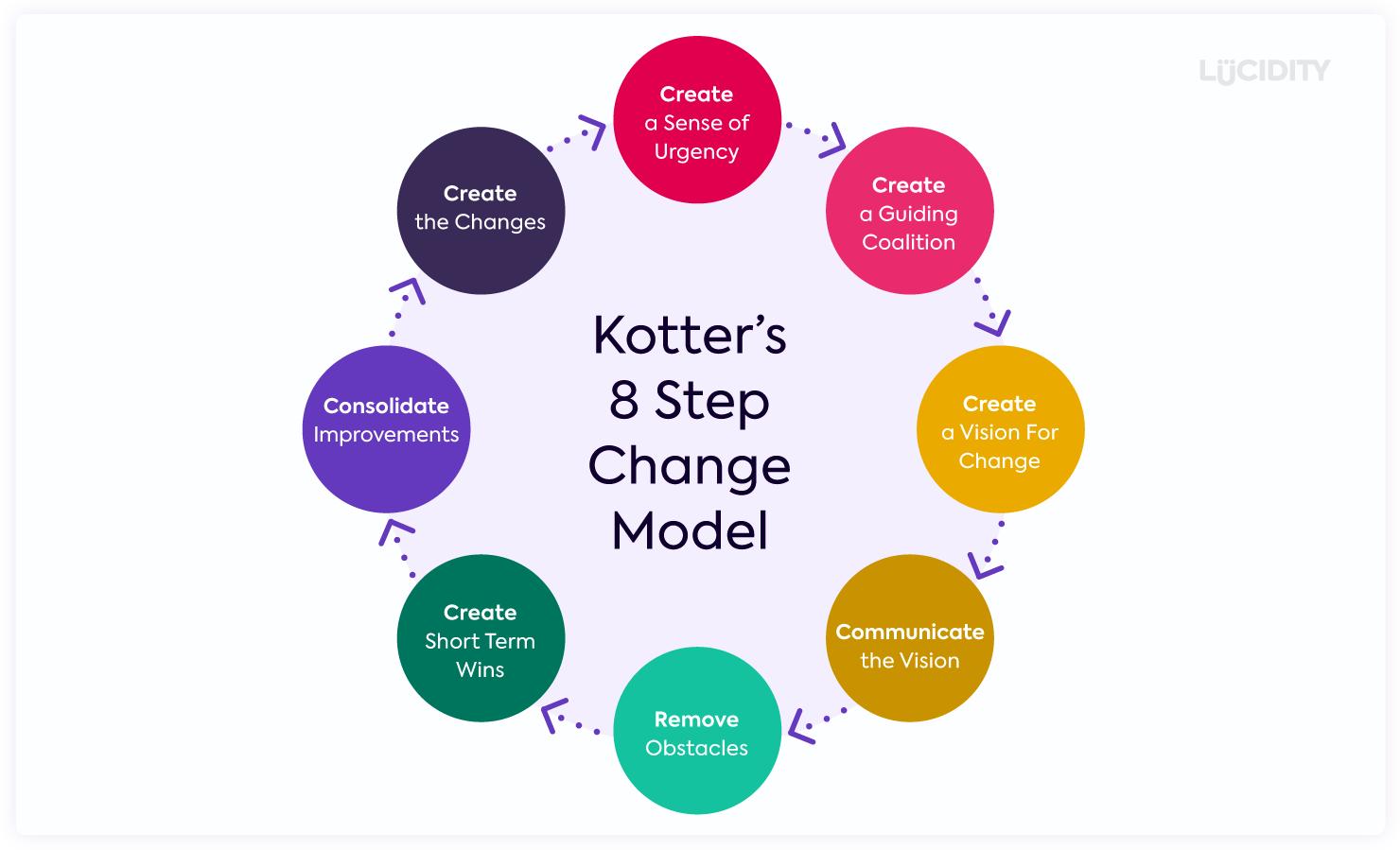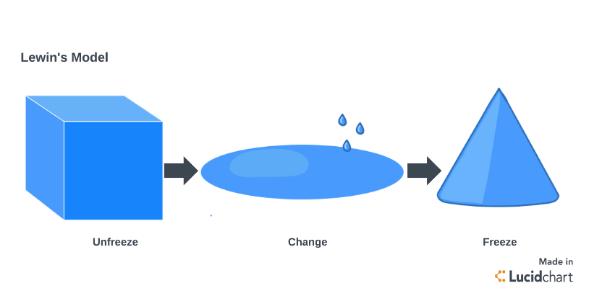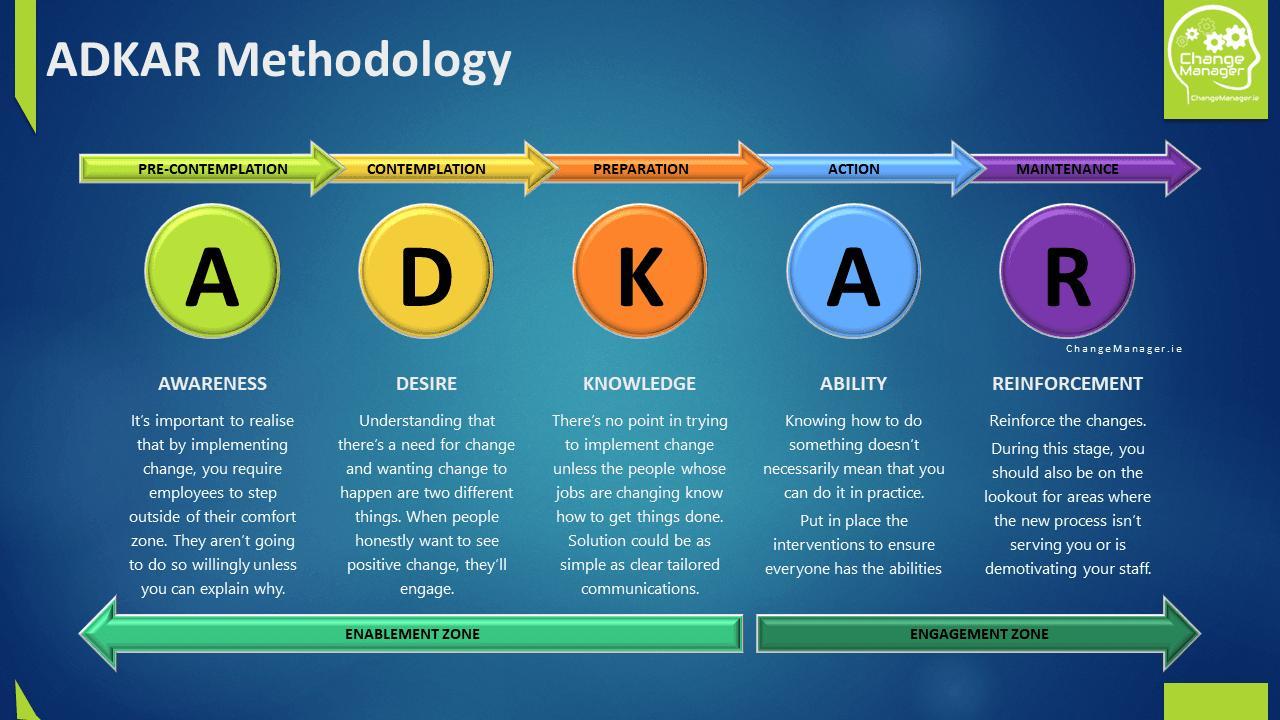












“If you don’t like something, change it. If you can’t change it, change your attitude.”
Maya Angelou
• How does this quote relate to leading change in your setting?
• Can attitude really change outcomes when change is externally driven?
• Which change model(s) help most with shifting mindsets or attitudes?
• How do personal beliefs and professional responsibilities overlap in times of change?





John Kotter’s (1996) model provides a structured approach to managing change in organisations.
It focuses on building urgency, vision and stakeholder engagement.
• Key concept: Change happens through structured steps, ensuring employee buy-in.
• Often used for: Large-scale organisational change, cultural shifts.




Kurt Lewin’s (1947) model breaks change into three phases: Unfreeze, change, refreeze. It focuses on preparing people, making the change and embedding it.
1. Unfreeze – assess readiness for change. Communicate the need and reduce resistance.
2. Change – implement the change with support and engagement. Provide training if needed.
3. Refreeze – reinforce new behaviours, update policies, and celebrate success.

Key concept: Change is a process of breaking old habits, introducing new ones and ensuring sustainability.
Often used for: Simple structural or behavioural changes, process improvements.




ADKAR is a goal-oriented change model focusing on individual transitions. Each stage must be completed for successful change.
Founded by Prosci founder Jeff Hiatt in 1996, it focuses on guiding individuals through the change journey by helping them realise the need for change, equipping them with the skills and knowledge they need to adapt to it, and motivating them to embrace it fully.

Key concept: successful change requires personal and organisational alignment.
Often used for: employee-driven change, personal development, team transformations.




Your education setting is introducing a new behaviour policy focused on restorative practice and relational approaches. While senior leadership supports the change, several experienced staff members are sceptical, believing that traditional sanctions are more effective. Some staff express concerns about losing authority or consistency. The new policy also introduces additional documentation requirements that staff worry will increase workload. The change is set to begin at the start of the next academic term.
A decision has been made to trial the Thrive approach within one team in your setting. While the team lead is enthusiastic, other members are unsure about its purpose or benefits. One member is openly resistant, believing it conflicts with the setting’s current priorities. The Thrive Practitioner is relatively new and lacks influence across the wider team. Time for training and reflective practice is limited. The pilot is intended to run for one term and inform wider rollout.
Your education setting has committed to embedding the Thrive approach across all key stages. A vision has been agreed, but implementation is inconsistent. Some staff have embraced the training, while others report confusion and lack of confidence in using the strategies. Middle leaders vary in how they support the change. External pressures, including Ofsted preparation and high staff turnover, are adding to uncertainty. You have been asked to support a working group to re-energise and embed the change.




What do you need to know?
What/who could support your change?
Any research/evidence available?
How will you measure success?
Have you thought of everything?
Think again!
Strategic goals:
What goals does this change help the organisation work toward?
Key performance indicators:
How will success be measured? What metrics need to be moved? What’s the baseline for how things currently stand?
Project stakeholders and team:
Who will oversee the task of implementing change? Who needs to sign off at each critical stage? Who will be responsible for implementation?
Project scope:
What discrete steps and actions will the project include? What falls outside of the




project scope?
How might you do this?
Which change model might you use?
How will you empower others?
What roadblocks do you anticipate? How can you plan ahead to overcome (mitigate) them?
How will you ‘maintain momentum’?
How will you stop things ‘slipping back’?
How will you ensure your change/s become the ‘new norm’?
What impact might your change/s have on the culture at your setting?
What key performance indicators (KPIs) did you set at the start to measure success?
How are you going to analyse them?
How will you present them? Who will you present to? Will you need to change your presenting style/content depending on the audience?
Did something not go to plan?
Remember, ‘failure’ is useful as it helps to shape the next stage of the change/s.

